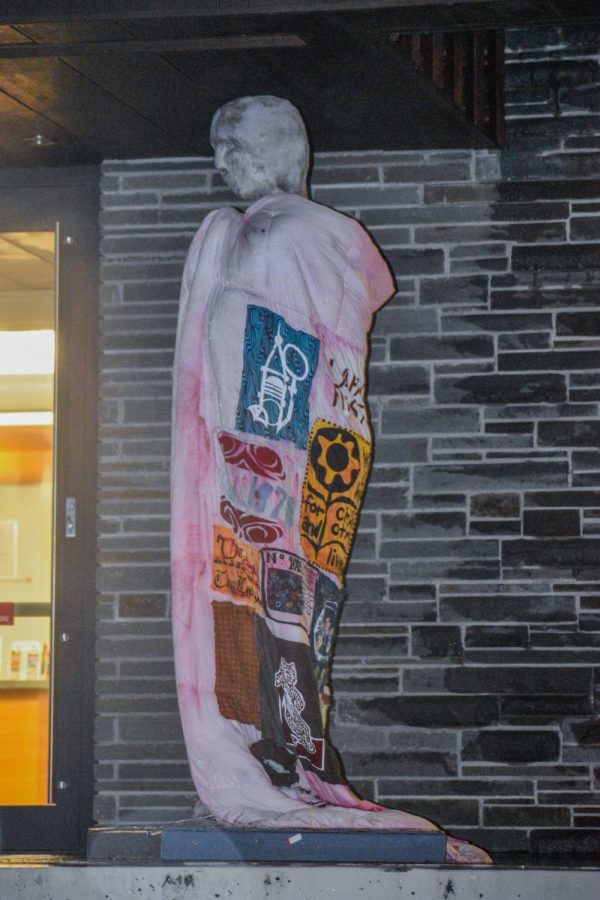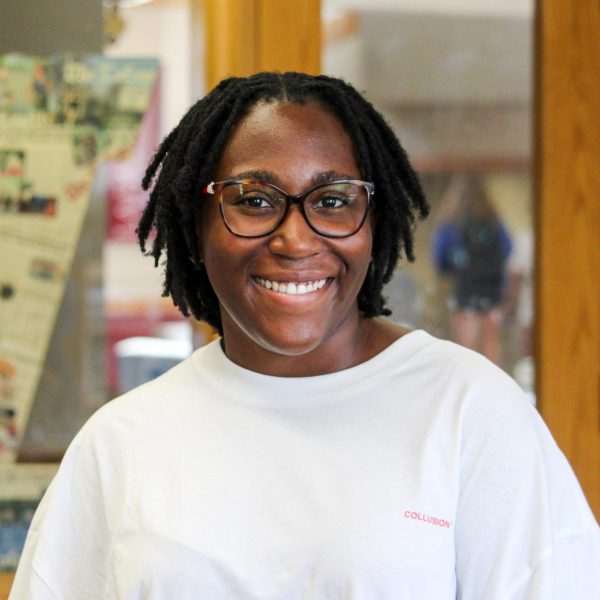In 1970, the first female students matriculated into Lafayette. Fifty-three years later, in the fall of last year, students in art professor Nestor Gil’s Materials and Methods class are ensuring their legacy is not forgotten with the creation of the Lady Lafayette statue.
Despite the 2020 celebration of the 50th anniversary of coeducation, some students believe there are not many ways that the school has visibly acknowledged its history in this area. While there is a small plaque in Ruef Hall in remembrance of the first women who lived there, as well as a quilt made by Liza Roos Prior Lucy ’74, a member of the first class of women, these items are rarely seen outside of Ruef Hall or Special Collections.
Gil’s students were inspired both by this lack of representation and the general shift in how Americans view the history of the country. Lily Dineen ’24, one of the members of the class, cited the recent toppling of monuments and increased recognition of important activists throughout time.
“A lot of monuments recently that exist have been re-evaluated and torn down or destroyed because of the controversy surrounding them. We evaluated what kinds of monuments exist on our campus and noticed that there were no obvious statues or monuments dedicated to women on campus,” she said.
The 12-person class took over a month to research what they wanted to do and physically build the monument. With various sculpture classes down the hill having the opportunity to feature their work as public art on the main campus, the group knew that their final piece would have to make a statement.
“We’re celebrating 50 years of being co-ed but we didn’t want [the monument] to seem like it was just some celebration of the fact,” Izzy Sorrells ’23, another member of the class, said of the group’s thought process. “We’re also reflecting that the story is pushed aside or not given the attention it deserves.”
While, according to Dineen, the statue itself features a generic woman meant to “represent the woman who confronts all the issues she faces,” the quilt covering her is a direct reference to the original quilt made by Lucy. The quilt, which features artwork created by various people in the class, is meant to represent the actual time period of the first class and what they experienced as that first group of women at the college.
“It’s important that it speaks to women, and even if you’re not a woman it’s a co-ed college and there were a lot of conflicting conversations leading to it being co-ed,” Emily Mackin ’24 said.
The monument currently stands at the top of the steps leading to Skillman Library’s entrance. “[We] considered a few places for the statue and settled on Skillman because it’s central to campus but not in the way. She’s very intentionally facing Pardee and you’re forced to walk around her and see the quilt,” Dineen said.
While this monument is temporary, Gil believes it is important to have a permanent and more visible way for the school to acknowledge the co-ed experience.
“Thinking about the timeline for a permanent monument, it happens in years, not months,” Gil said. “It’s so important that people like Lily and other members of the class like Emily become central to the dialogue about what form the monument will take and what type of artists we want.”

























































































































Edith • Jan 27, 2023 at 7:16 am
So important to capture the complete history of our institutions. Great article.
Cassandra Donnelly • Jan 27, 2023 at 7:16 am
Another fabulous article by a rising journalist! The women, the quilt, the college and the world in which they all came together. I am enlightened.